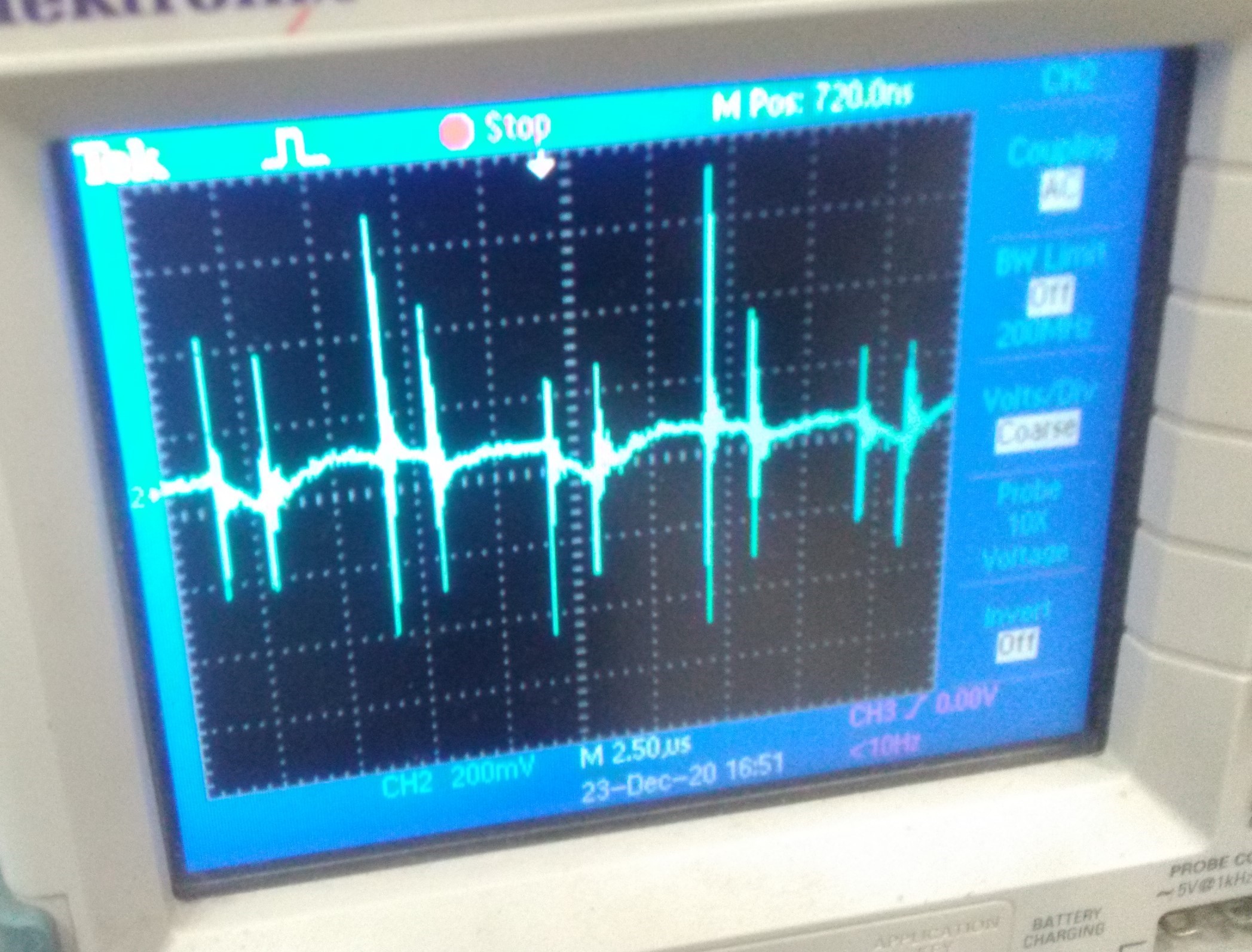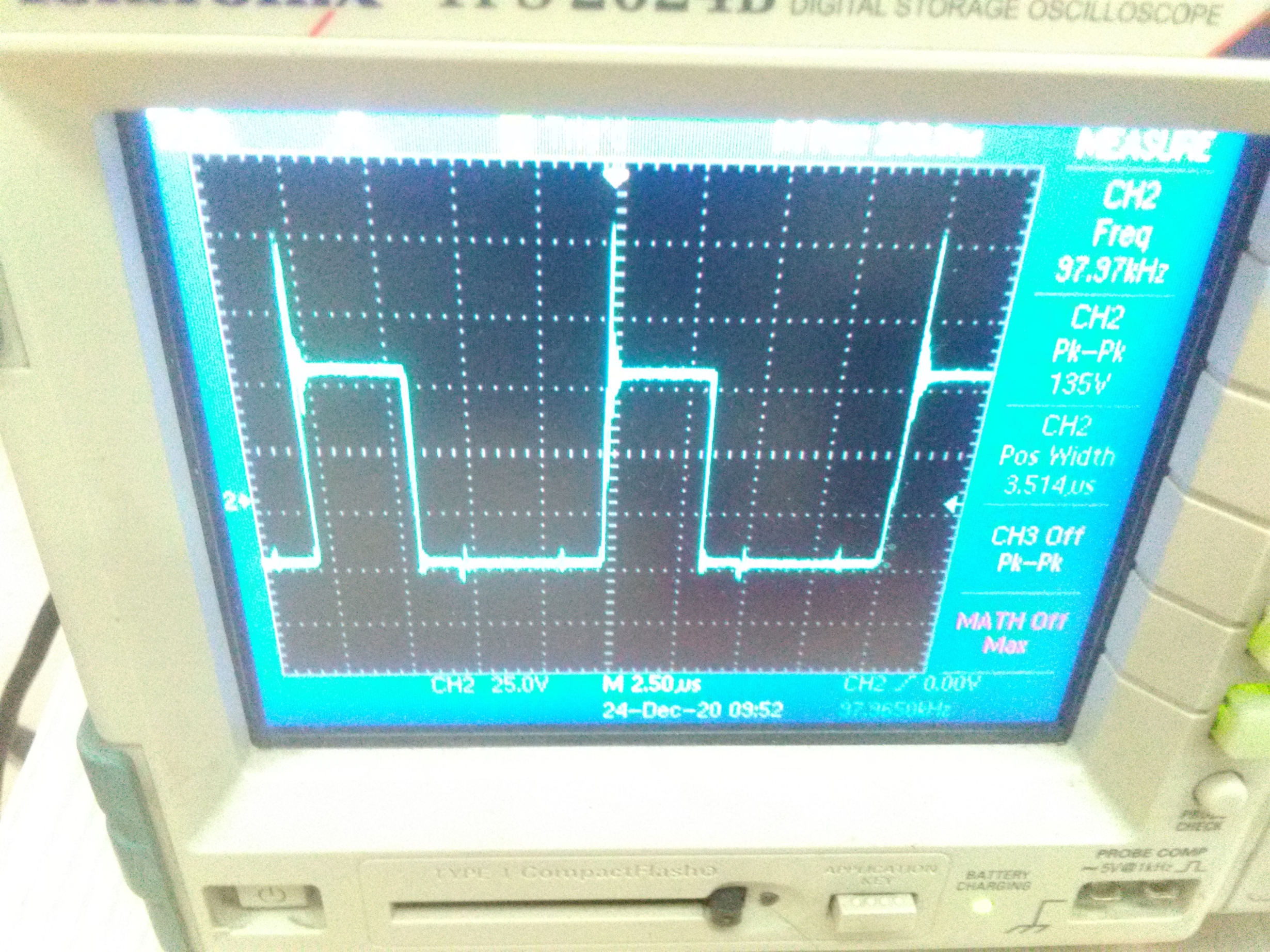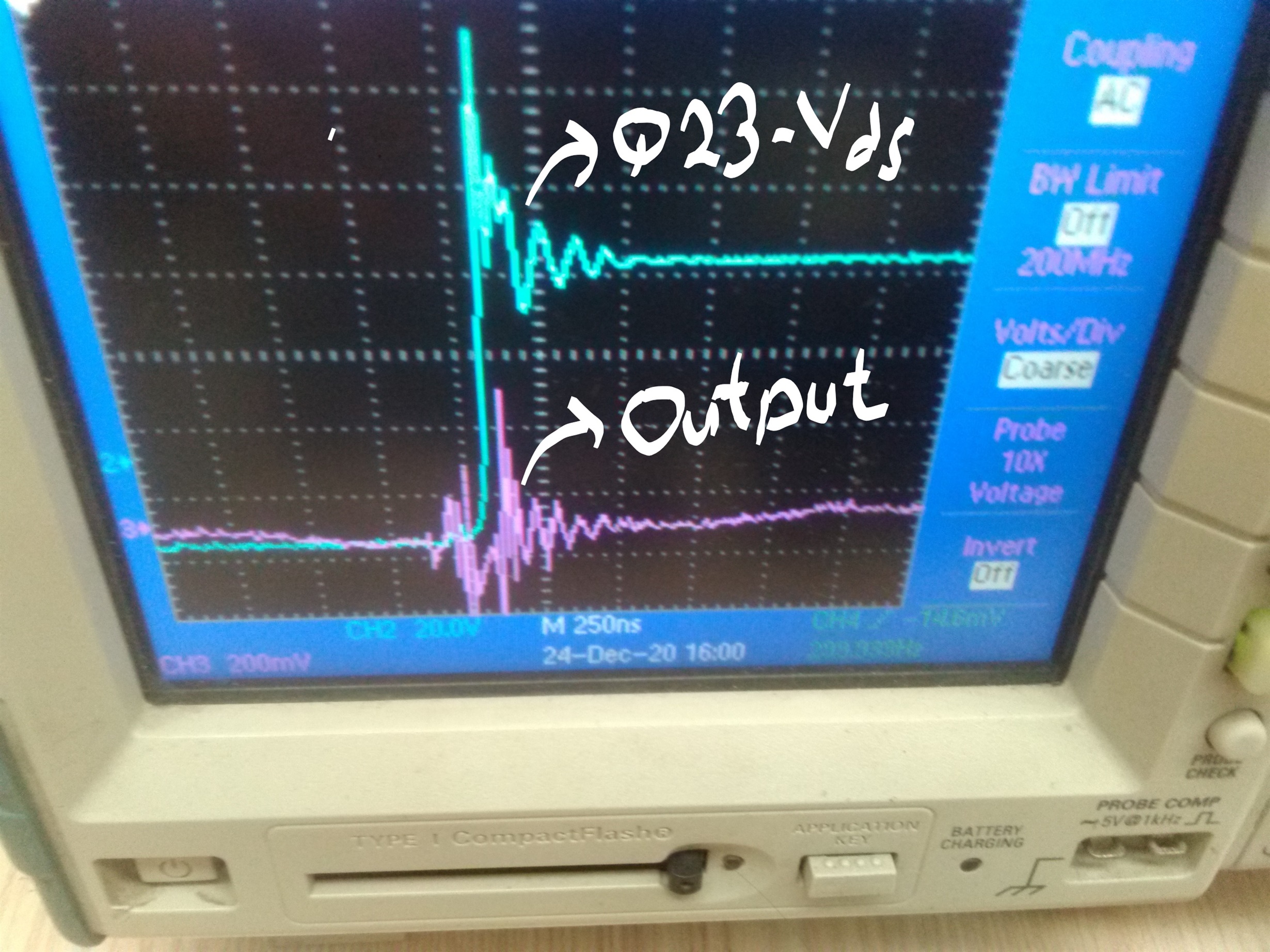Hi Roberto ,
I have designed AC-DC battery charger by taking PMP8740 as a reference. I used same schematics like PMP8740 both full bridge and PFC circuits but in PCB layout I have made some changes like PCB size.
My pfc and full bridge circuits working but I have some problems with these circuits.
Now I am testing only my full bridge circuit.
The full bridge input is 400 volt 5A external dc power supply. Not the PFC output
When no load Full Bridge output is 27,3V approx.
When 50A load , output is 27,1 volt and output has high frequency noise (1.2 Volt peak to peak) and ripple. I attached the scope view in figure 1.
Also I have observed the Q23 Vds( PMP8740 schematic) drain source voltage in figure 2. In my opinion these hf noise comes from full bridge transformer secondary winding.
I have observed the Full bridge output and Q23 Vds in scope together in figure 3.
How can I reduce output noise?
what could be sources of noise?
Figure1 :
Figure 2:
Figure 3:




